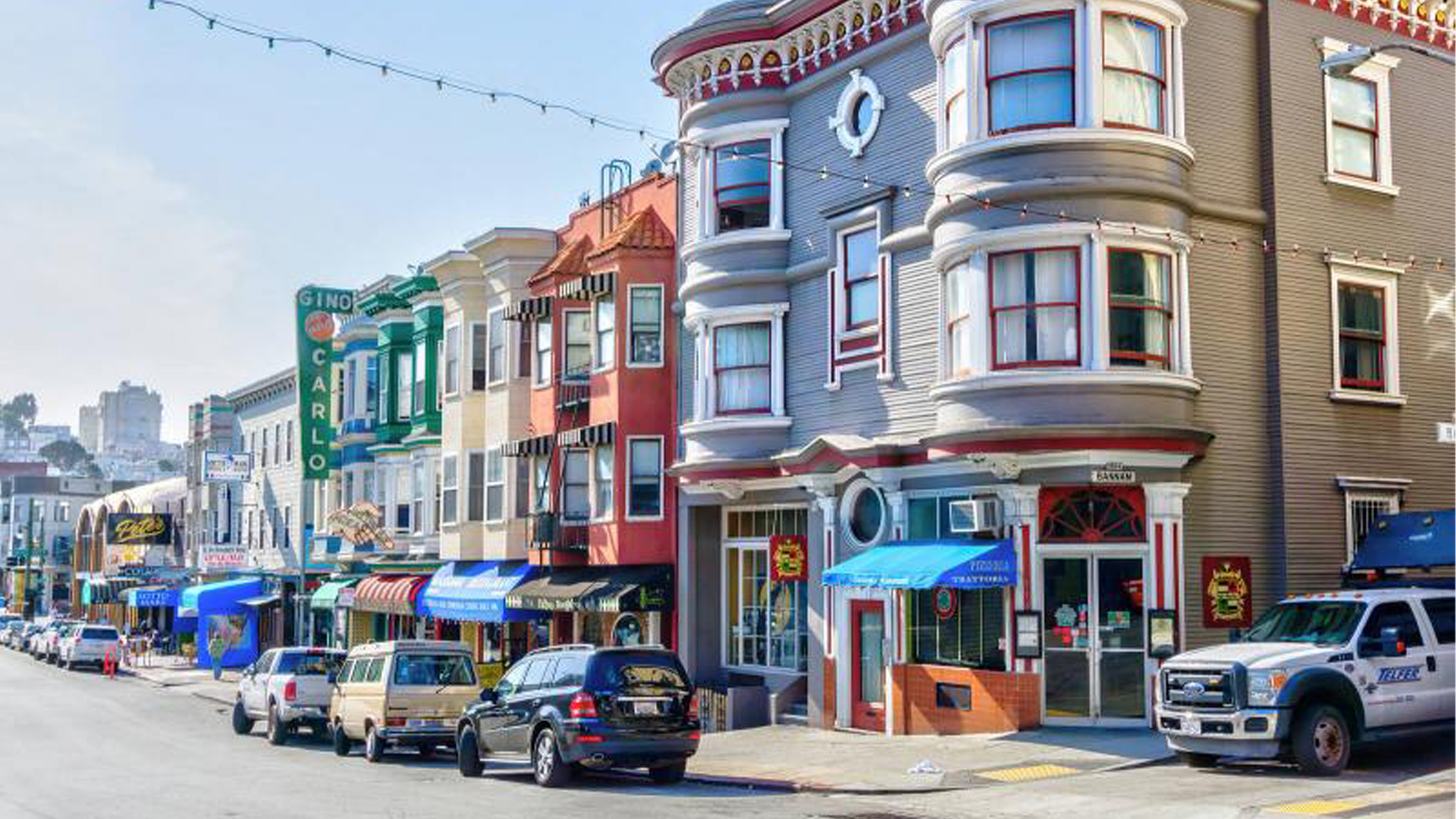Since the Gold Rush, California has been a state of immigrants. Between 1850 and 1900, the Golden State experienced a fascinating period of Italian immigration. California has seen three waves of Italian immigration. The first and largest wave, due to extreme poverty in the newly unified Italy, took place between 1850 and 1924. During this time, Italians immigrated to California predominantly from the Italian regions of Piemonte, Liguria, Tuscany, Sicily, and Calabria.
Painting North Beach Red, White, and Green
San Francisco was the initial point of entry and the first Italian colony in California. For nearly 100 years, Italian immigrants in California were symbolically united by the San Francisco community and its strong Italian identity. The first Italians in San Francisco settled on Telegraph Hill and as the Italian population grew, it spread throughout the North Beach neighborhood, which became known as “Little Italy”. North Beach always had an abundance of restaurants, and by the turn of the century, it had become a gastronomical paradise. The North Beach area was also the social and cultural center of Italian San Francisco.
The Lasting Impact
By 1860, the largest number of Italian immigrants in the United States lived in California and by 1890 there were more Italian immigrants on the Pacific Coast than in New England. They introduced Italian Opera to California in 1851 and Italian Jesuit priests founded the University of San Francisco in 1856. By 1859, the Italian enclave in San Francisco and Northern California was large enough to support its own Italian language newspaper called, La Voce del Popolo. To celebrate Italian pride, the first Columbus Day Parade was established on October 19, 1869. It was organized by the leading Italian civic leader at the time, Nicola Larco. In 1884, the first national Italian Roman Catholic church, Saints Peter and Paul, was founded in North Beach to serve the Italian community of San Francisco.

San Francisco Columbus Day Parade (Photo Credit: sfitalianheritage.org)
The aftermath of the Gold Rush brought more northern Italians to California. The wealth created during the Gold Rush years ignited a demand for stone and marble cutters from Italy to work on the mansions of the newly rich. The fishing grounds and Mediterranean climate began to attract Sicilian fishermen for the first time. The wine wasn’t the only agricultural product developed by Italians in California. Eating grapes and citrus fruits were also grown in the rich California soil. Northern Italian immigrants who were able to save money began to buy real estate in the valleys for agriculture.
San Francisco was the investment capital of the state and the headquarters for many banks and businesses established by Italian immigrants. In 1904, Amadeo P. Giannini founded the Bank of Italy as a way for Italian immigrants to save and borrow small amounts. He renamed his bank on November 3, 1930, calling it the Bank of America.
Evolution of Immigration
Limited by the U.S. Immigration Act of 1924, the second and smallest wave of Italian immigration took place before and after World War II. It was made up primarily of middle-class Italians, whose lives had been destroyed by Italy’s collapse. The immigrants who were part of this second wave were quite different from previous ones: they were middle class and they were older.
This third wave, which began around 1970 and continues today, has played a big role in California’s high-tech revolution. According to AIRE, Anagrafe Italiani Residenti Estero, the Italian community of immigrants to California, from 1970 to today, numbers a little over 20,000 people.Arianna DiCicco
Arianna DiCicco is an educator and writer from California, born into an Italian American restaurant family with strong ties to her grandparents’ home in Abruzzo, Italy. She has lived in San Francisco, Rome and New York City where she’s made deep connections within the Italian communities and gained new perspectives about her own culture. With a Masters in International Education, Arianna has a love and passion for learning and educating others about Italian history & culture.

